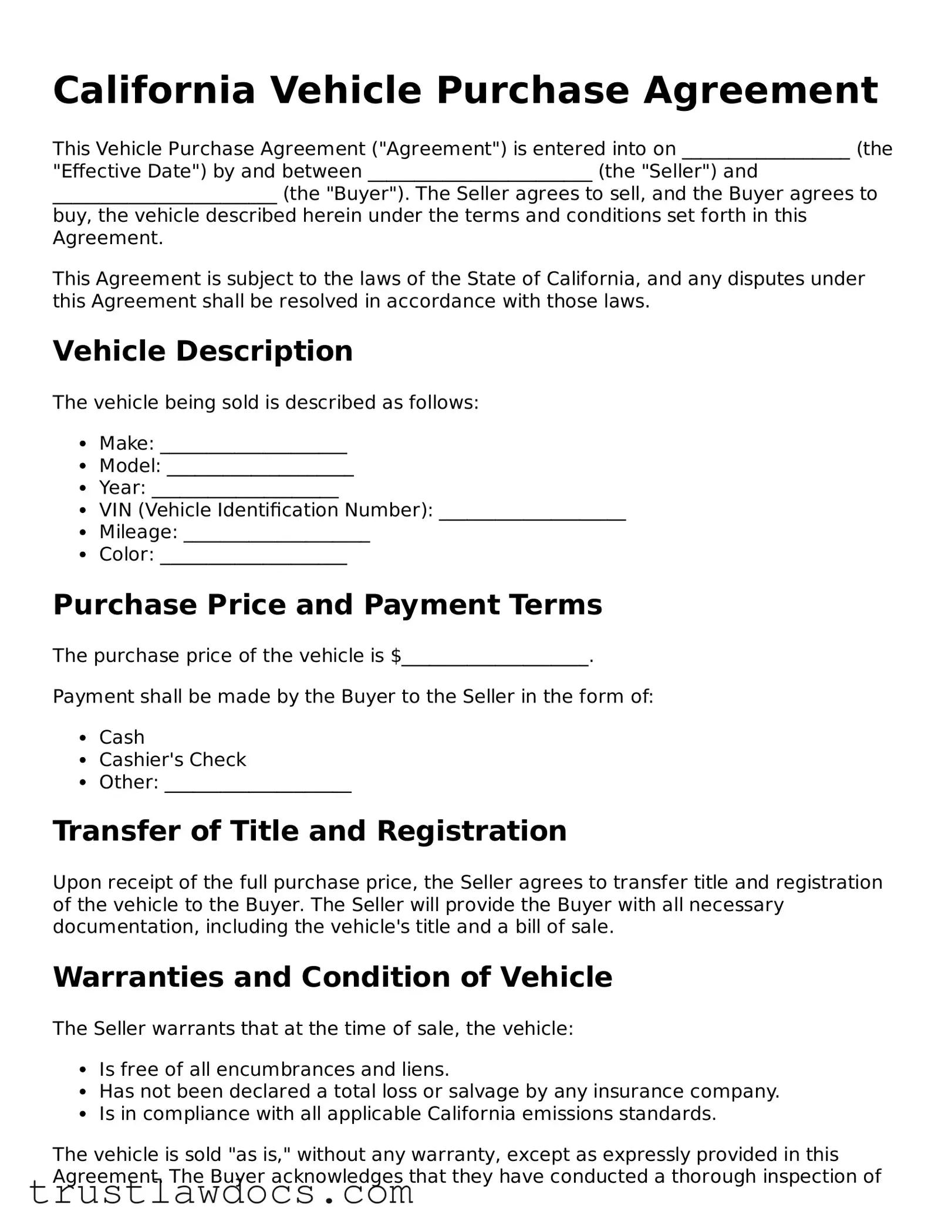What is a California Vehicle Purchase Agreement?
A California Vehicle Purchase Agreement is a legal document that outlines the details of the transaction between a buyer and seller for the sale of a vehicle in the state of California. It typically includes information such as the make, model, year, VIN (Vehicle Identification Number), purchase price, and the terms and conditions of the sale.
Why is it important to have a Vehicle Purchase Agreement?
Having a Vehicle Purchase Agreement is important because it serves as a legal record of the sale and purchase transaction. It protects both the buyer and the seller by specifying the condition of the vehicle, the agreed-upon purchase price, and any other terms of the sale. This can help prevent misunderstandings and disputes after the transaction has been made.
What information needs to be included in the agreement?
The agreement should include comprehensive information about the sale, including the names and addresses of the buyer and seller, a detailed description of the vehicle (make, model, year, VIN), the sale price, payment method, delivery details, any warranties or guarantees, and the signatures of both parties involved.
Is a Vehicle Purchase Agreement legally binding?
Yes, once both the buyer and the seller have signed the agreement, it becomes a legally binding contract. This means both parties are legally obligated to abide by the terms as laid out in the agreement.
Can the agreement be modified?
Yes, the agreement can be modified if both the buyer and the seller agree to the changes. Any modifications should be made in writing, and both parties should initial any amendments or addendums to the original agreement to indicate their consent.
What happens if the buyer decides to back out after signing the agreement?
If the buyer decides to back out after signing the agreement, the ramifications will depend on the terms specified within the agreement itself. Often, there may be a clause that allows for a deposit to be non-refundable or for a certain amount to be paid in damages. It's important to review the agreement's terms regarding cancellation by either party.
Do I need a notary for a Vehicle Purchase Agreement in California?
While notarization is not legally required for a Vehicle Purchase Agreement in California, having the agreement notarized can add a layer of legal protection. Notarization can help verify the authenticity of the document and the identities of the signatories.
How can I ensure that the vehicle is as described in the agreement?
Before finalizing the Vehicle Purchase Agreement, it’s highly recommended to have the vehicle inspected by an independent mechanic. This can help ensure that the vehicle's condition is as described in the agreement. Additionally, obtaining a vehicle history report can provide valuable information on the car's past, like accident history or previous damage.
Is it possible to include a warranty in the Vehicle Purchase Agreement?
Yes, either party can request the inclusion of a warranty in the Vehicle Purchase Agreement. The terms of the warranty, including its duration and what it covers, should be clearly defined within the agreement. However, understand that private sellers often sell vehicles “as-is,” meaning without a warranty, leaving the buyer to assume all risks once the sale is complete.
What should I do after completing the Vehicle Purchase Agreement?
After completing the Vehicle Purchase Agreement, both the buyer and the seller should keep a copy for their records. The buyer will need to transfer the title into their name and register the vehicle with the California Department of Motor Vehicles. It’s also important for the buyer to obtain insurance for the vehicle before driving it.
